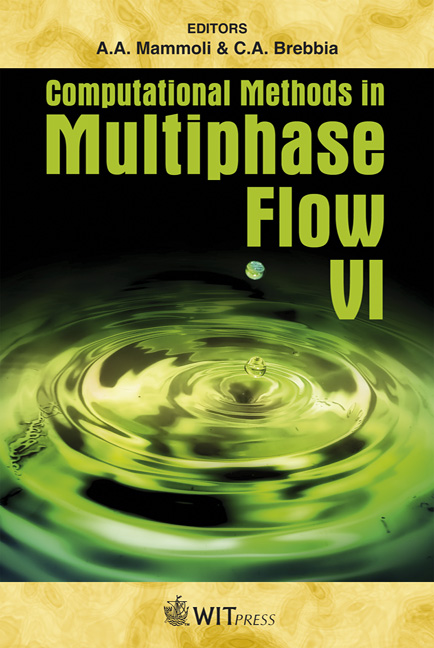Methodology To Determine Residence Time Distribution And Small Scale Phenomena In Settling Tanks
Price
Free (open access)
Transaction
Volume
70
Pages
9
Page Range
117 - 125
Published
2011
Size
534 kb
Paper DOI
10.2495/MPF110101
Copyright
WIT Press
Author(s)
T. Karches & K. Buzas
Abstract
Hydraulic residence time is a crucial parameter of any wastewater treatment tank planning, operation and optimisation. Calculation of the residence time distribution at every point within the tank gives information about the deadzones and short circuits and well-operating zones. Using the advective-diffusive transport equation supplemented with a scalar source term local mean age (LMA) can be detected if the flow field is given. Combining LMA with a tracer study the exact residence time can be determined. This method supports problem detection in a small wastewater treatment plant (2 dead zones and one shortcircuiting path were detected) and also gave us better understanding of the operation of settling tanks. Keywords: CFD, LMA, residence time, settling tank design. 1 Introduction Computational fluid dynamics (CFD) in wastewater treatment processes has a significant role in recent years. Several studies demonstrate that CFD is an effective tool in design (Greenfield [8]), optimization (Bratchley et al. [3]) and operation (Brouckaert and Buckley [4]) Furthermore CFD studies revealed that with an extensive knowledge of fluid flow not only the hydraulic performance of e.g. an oxidation ditch could be improved (Yang et al. [17]) but we could have a closer look into the biological processes, too (Bartrand et al. [2]) For a few decades researchers used to focus only on the biology and chemistry in wastewater treatment, and hydraulics was mostly neglected.
Keywords
CFD, LMA, residence time, settling tank design





